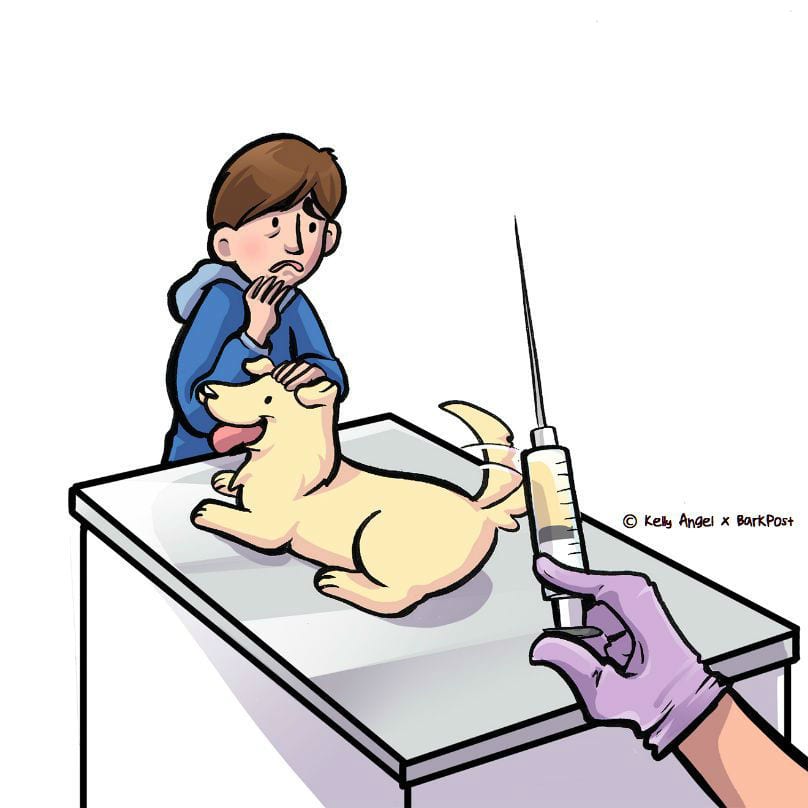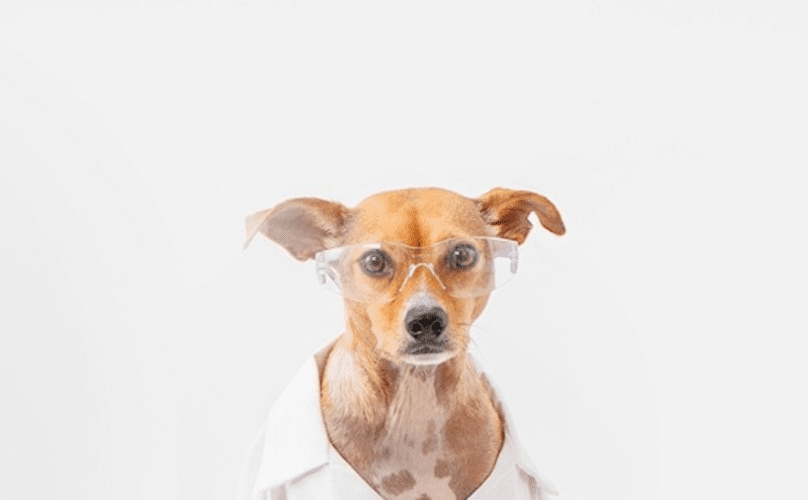The Fear Free movement is taking Veterinary Science by storm… but what is it, exactly, and how does it improve the lives of pets (and shelter animals) everywhere? We turned to the source itself at Fear Free Pets for the answer.
Fear Free has one mission: to reduce stress and anxiety in dogs during veterinary visits or, in sad circumstances, shelter stays. Many shelters and vets have signed on to the movement by committing to practices (such as calming treats and mats on exam tables to reduce sliding) that prioritize the dog’s comfort over anything else.
Want more tips for how you can keep your dog’s vet visit fear free? Check out the images below!
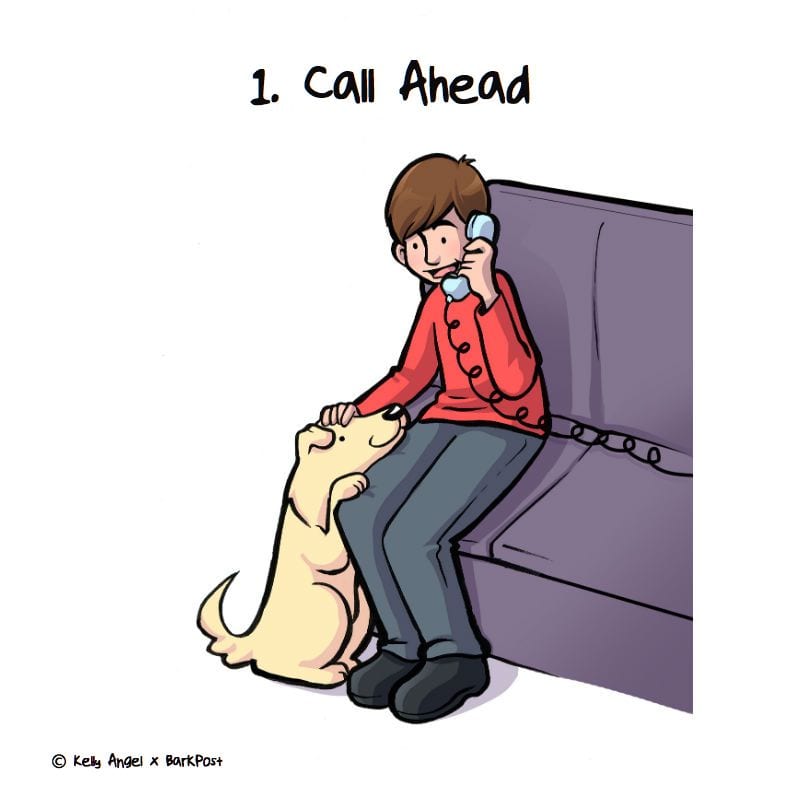

Call ahead to your vet and confirm what will be done at the appointment ahead of time, especially if there is anything (vaccine, procedure, etc.) that might be out of the ordinary for your pet. Since your dog can’t communicate with the vet, it’s super important that you take the lead!
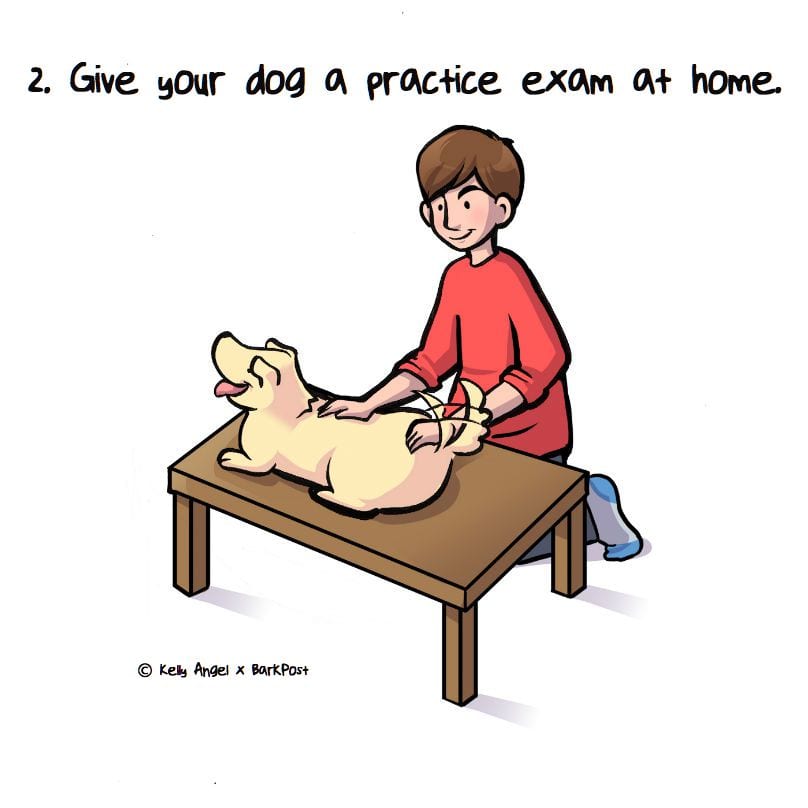

Get your dog accustomed to being handled by a veterinarian by practicing at home! During the exam your vet is going to touch and handle your dog in ways that you normally don’t. For example, vets commonly examine each patient’s eyes, ears, teeth, skin and body condition. This involves bright lights, strange equipment, and up close and personal contact.
When you and your pup are relaxing or playing together, try running your hands over his body from head to toe, lifting each limb as the vet will do when palpating his joints. Peel back his lips to expose his teeth and open his mouth wide to reveal his throat. Lift up his ear flaps and peak inside or swab gently with a Q-tip. The more you attempt to do these things casually or playfully, the less terrifying it will be for your pooch come exam day.


The better health and behavioral foundations your dog has at home, the easier it will be at the vet! Work on basic commands such as “Sit,” “Down,” and “Stay” with treats as rewards so that your vet will have an easier time during the exam.
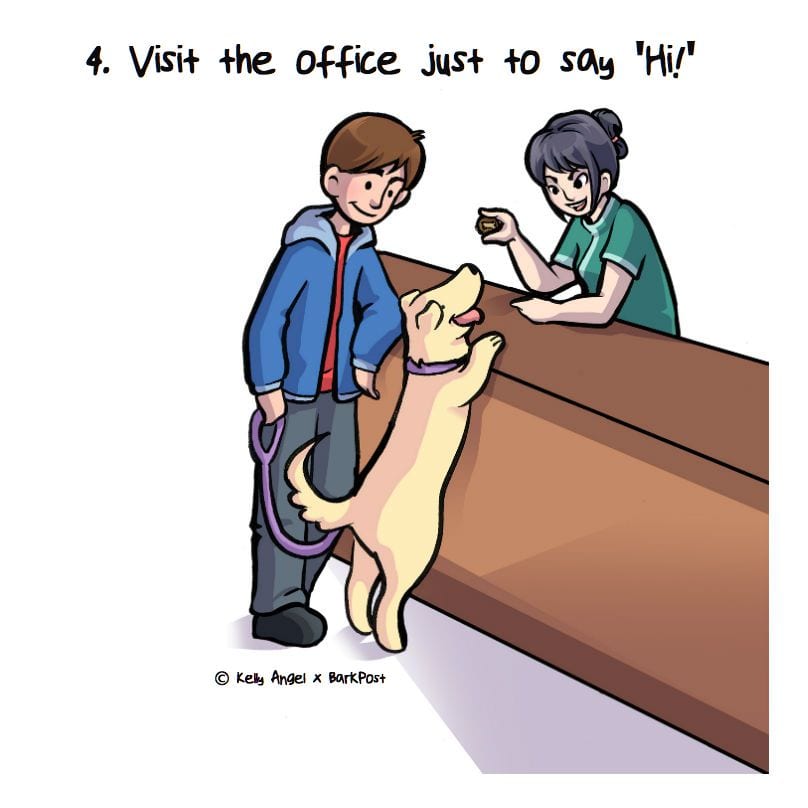

Dogs are learning all the time. Scents, faces, surfaces, and stimuli all contribute to how they absorb information. And if what they learn is that the vet’s office is bright, cold, and that they get manhandled whenever they step a paw in the door, it’s no wonder they’ll act out at every visit! That’s why we recommend scheduling visits to the vet in between examinations so that your pet sees the place as familiar, fun, and fear free.
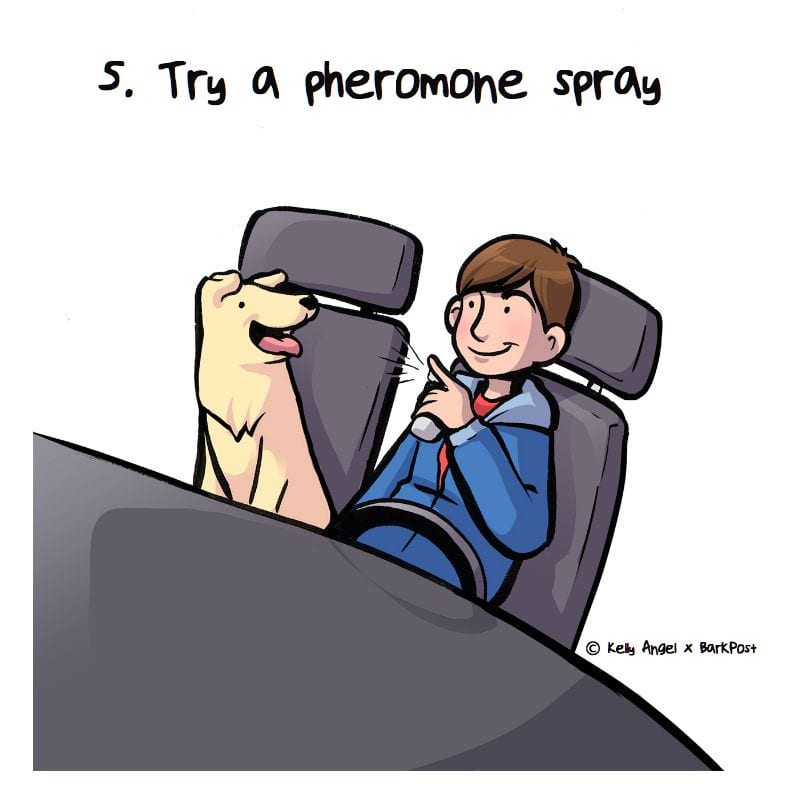

If the drive to the office reduces your pup to a drooling, shaking, bundle of nerves, consider one of the natural pheromone sprays on the market. Adaptil makes products with Dog Appeasing Pheromones (DAP) that mimic the hormone released by whelping mothers to sooth their puppies. Research has shown that these sprays, collars and diffusers can have the same calming effect on dogs throughout their lives. Pheromone products are sold and recommended by many vets.
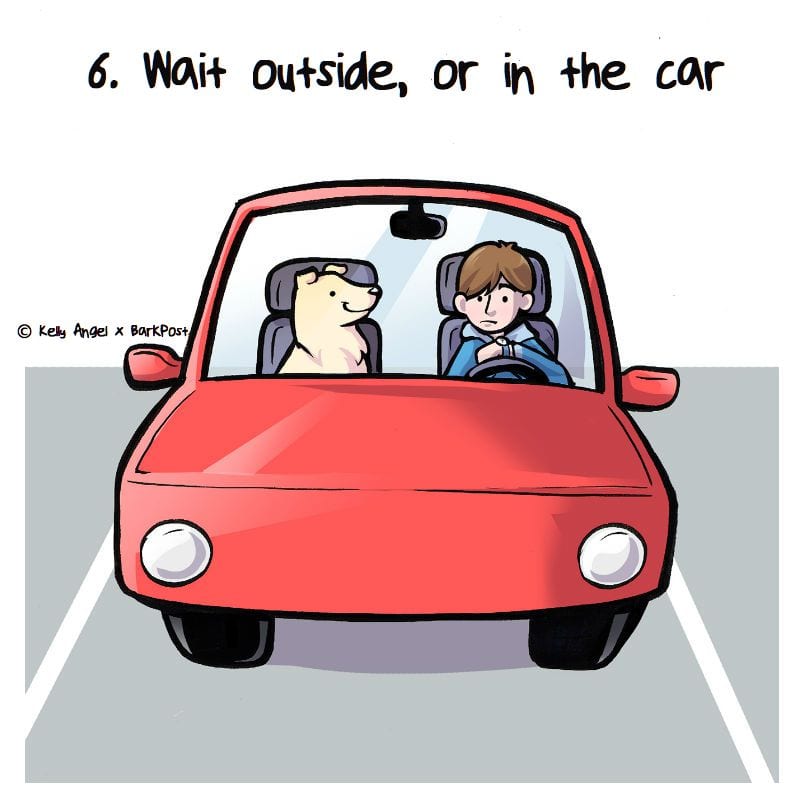

One simple way to minimize your dog’s stress is to walk him around outside or keep him in the car until the technician is ready to bring you into the exam room. This allows you to spare your pooch the sights, smells, and sounds of the waiting room. Ask the receptionist to call your cell phone or wave you in when it’s time to go back. Dogs that behave aggressively at the vet should definitely avoid the waiting room.
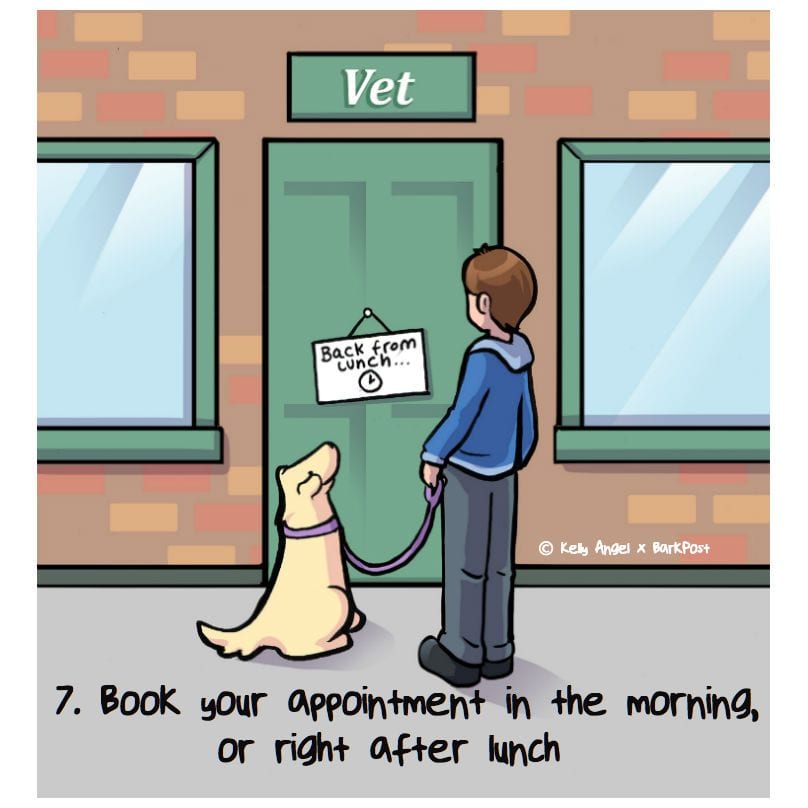

Much like doctors, vets can fall behind schedule due to unforeseen emergencies or difficult cases. Your best chances of being seen quickly and on time are the first appointment of the day or the first slot after the lunch break. (Need to visit the vet for an emergency? Always call first! Sometimes the vet will be so booked up with procedures and exams that they can refer you to someone else they trust for an ASAP appointment.)
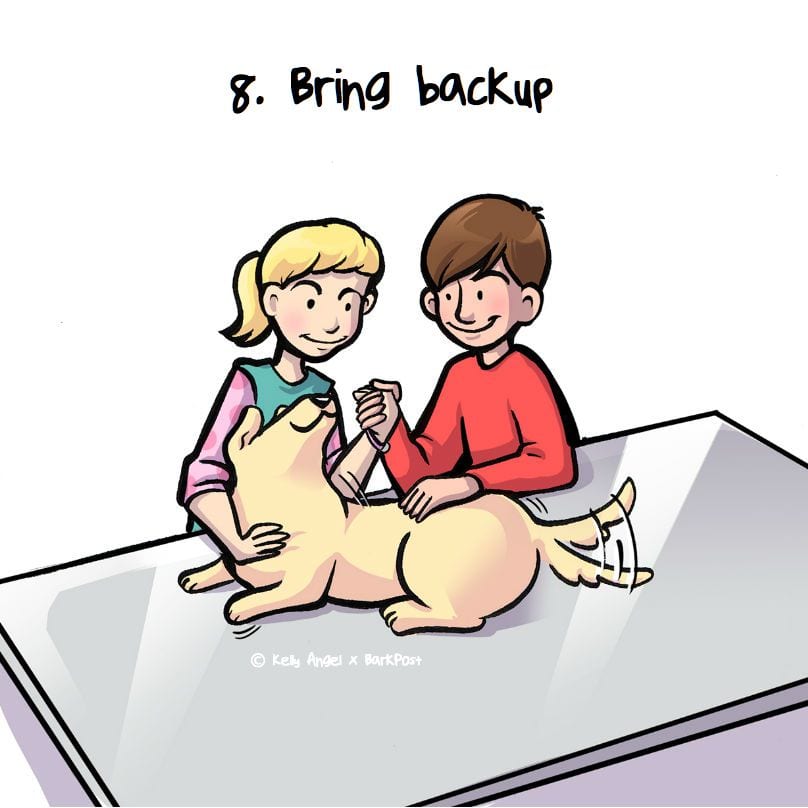

You know what they say: two familiar faces are better than one! If you know your pup does better when surrounded by people they know and love, consider tag-teaming a visit with a partner, friend, or even their beloved dog walker! Having an extra hand can be super helpful to humans and reduce stress in dogs, especially after any additional procedures are done.
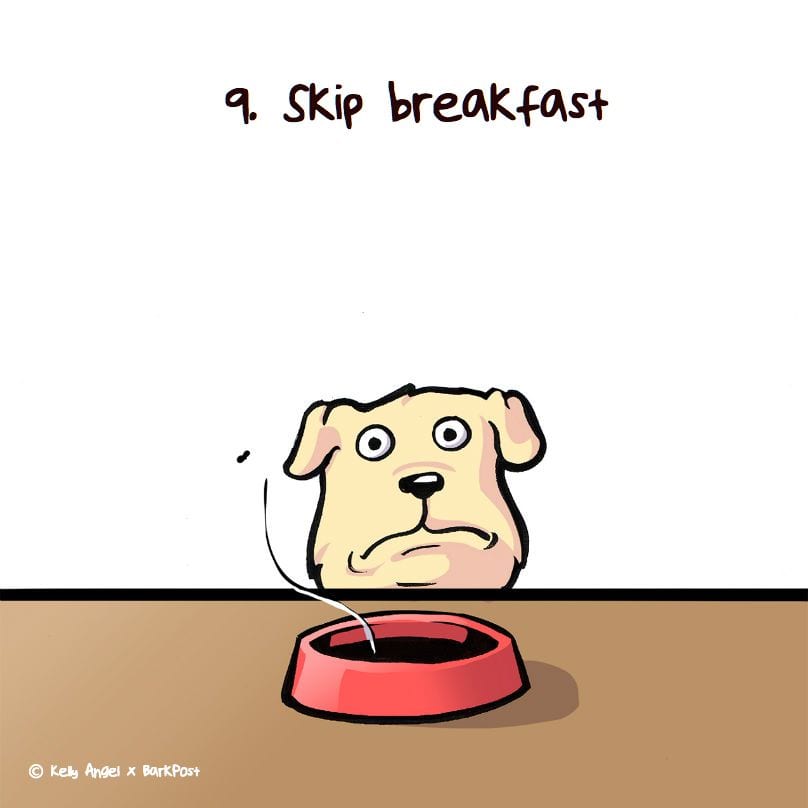

Despite the fact that they can’t talk, there are some ways dogs communicate their feelings with us. Gastrointestinal issues can sometimes be a sign of stress, especially if they occur just before, on the way to, or even at the vet itself. Skipping breakfast can help ensure no messes occur that take time away from your pup’s office visit. And when you’re done, make sure to have a Bright Dental treat on hand to distract them during the car or subway ride home.


Some pups can only be soothed by toys or treats, so why not bring them with you? They can help distract your pet while the vet performs the exam, and, if you sneak some to the staff, your dog will extend their trust to them in no time.
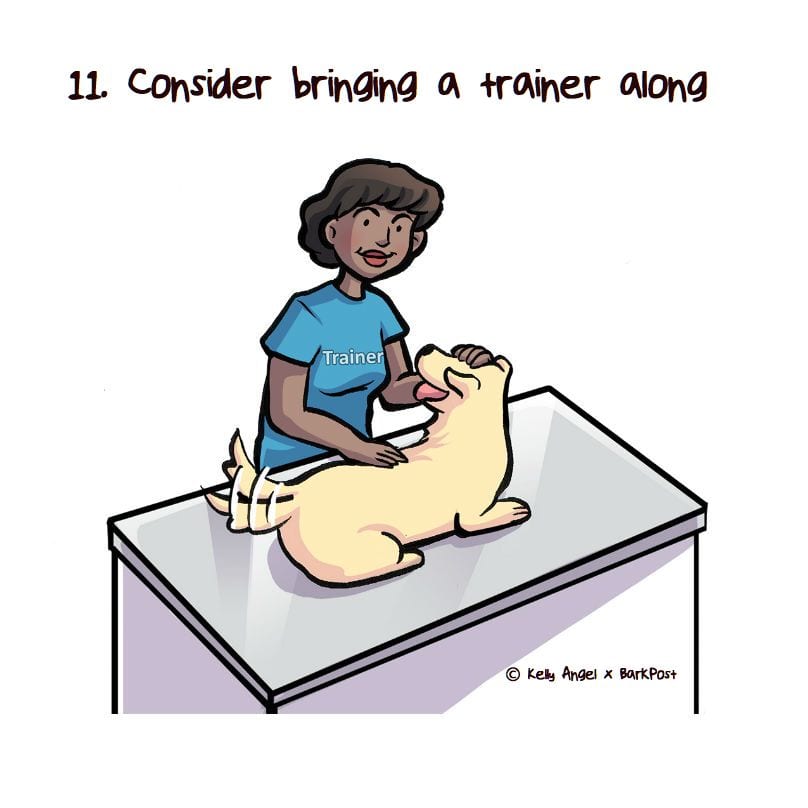

If your dog’s behavior at the vet’s office is dangerous or destructive to himself or others, it may be time to bring in a professional. Lots of trainers offer to accompany you to the visit in order to assess and work with your dog at the scene of the issue. This may seem extreme, but the safety of your pet and everyone else involved is the number one priority.


As you struggle to comfort your pet, your own anxiety levels may skyrocket. Our dogs are extremely intuitive. If they sense that we are stressed or nervous, they will likely feel that way, too.
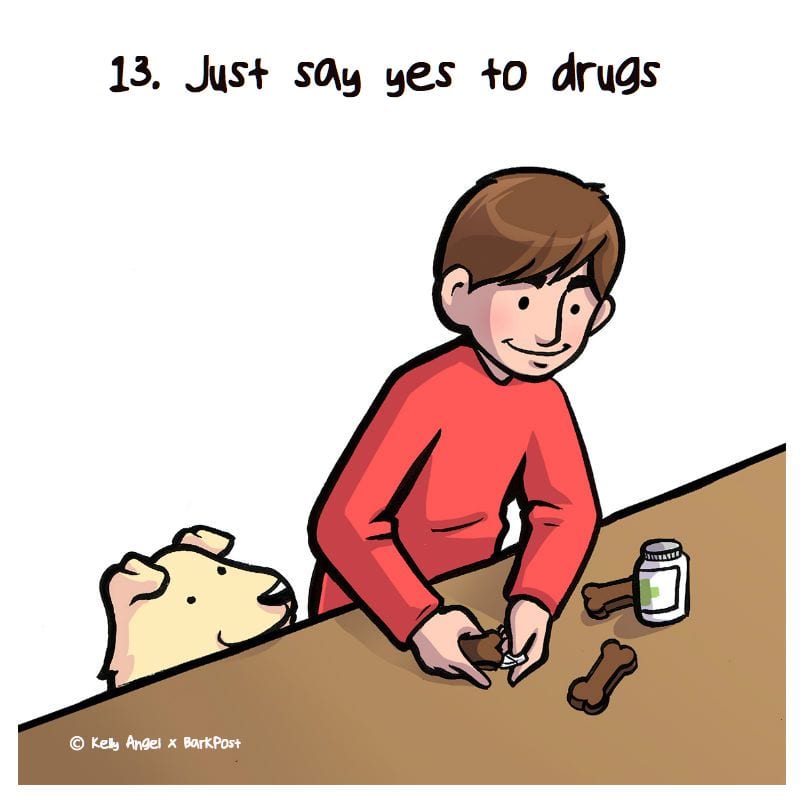

There is nothing wrong with admitting that your dog needs help. Anxiety is a medical condition just like any other, and your pup deserves relief. If all else fails, set up a consultation with your vet to discuss the issue. He or she may recommend any number of drugs to help relieve the symptoms.
There are low-dose meds that can be taken daily for dogs who suffer from fear and anxiety in multiple situations. Pups whose fear only surfaces at the vet may just need a pill or two prior to their appointment to help ease their symptoms.
Oh, hey! You know what else will help get you a quick, stress-free visit with a compliment thrown in? Super clean teefers! BARK Bright is a dual dental stick + triple-enzymatic toothpaste combo that, when given daily, freshens your dog’s breath and breaks down plaque-causing debris. The best part? NO TOOTHBRUSH!



